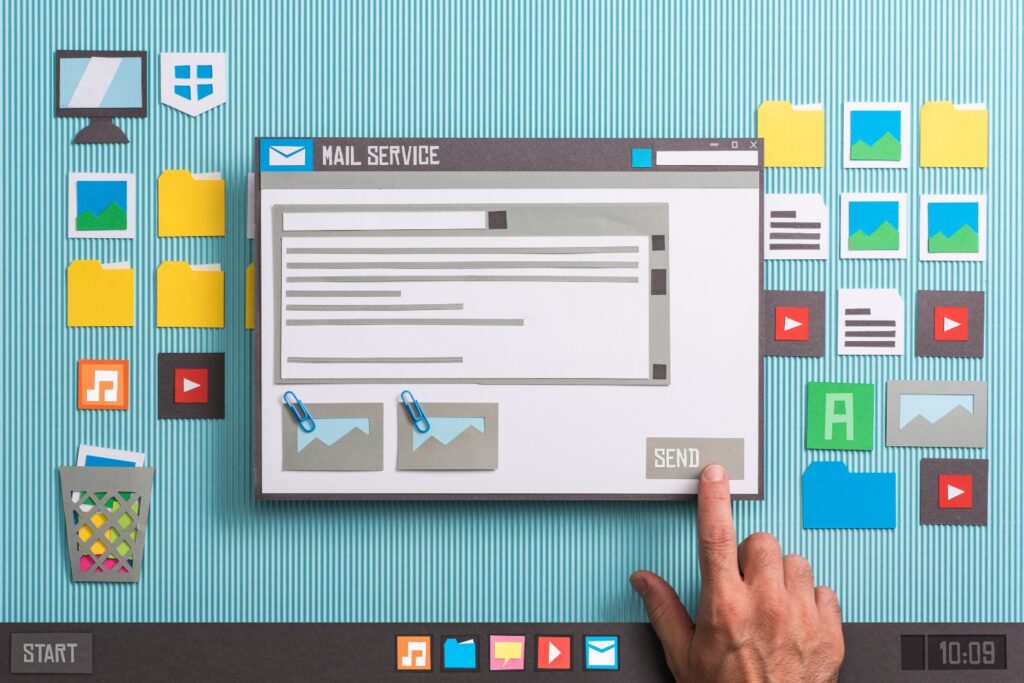As traditional methods, like mailing physical transcripts, become outdated; students wonder whether they can email transcripts.
This article delves into the evolving landscape of transcription services, exploring the feasibility and advantages of transmitting transcripts via email.
We examine how this digital transformation reshapes workflows, enhances efficiency, and revolutionizes how organizations and individuals access and distribute transcriptions.

Advantages Of Emailing Transcripts
By embracing the advantages of email transcripts over traditional physical mailing methods, organizations can optimize their workflows, improve accessibility, and enhance collaboration while contributing to a more sustainable and efficient working environment.
Here are a few advantages of using email to send your high school transcripts:
- Instant Delivery: Emailing transcripts allows for immediate delivery to recipients, eliminating the time-consuming process of physical mailing.
- Cost and Time Savings: By opting to email transcripts, organizations can save on postage costs, printing expenses, and packaging materials. Additionally, the time spent on preparing and sending physical transcripts is eliminated, leading to increased efficiency.
- Accessibility and Convenience: Email transcripts provide easy access to the transcribed content, as recipients can quickly retrieve and view the files on their preferred devices, such as computers or smartphones.
- Seamless Integration: Emailed transcripts can be seamlessly integrated into digital workflows and platforms, making it easier to search, store, and share the transcribed information with colleagues or stakeholders.
- Enhanced Collaboration: With emailed transcripts, multiple recipients can access and collaborate on the same document simultaneously, fostering efficient teamwork and reducing the need for physical document distribution.
- Eco-Friendly Solution: Choosing to email transcripts significantly reduces paper waste and the carbon footprint associated with physical mailing, aligning with sustainability goals.
- Preservation and Archiving: Emailed transcripts can be easily stored, archived, and retrieved digitally, ensuring the long-term preservation of important information without concerns of physical document degradation or loss.
- Global Reach: Emailing transcripts transcends geographical boundaries, allowing for efficient communication and information sharing across different locations and time zones.
Protecting Your Information
Emailing transcripts can be made secure by implementing various measures to protect sensitive information during transmission. Here are some key considerations:
Encryption.
Utilize encryption techniques to secure the content of the transcript during transmission. Encrypted email protocols such as S/MIME (Secure/Multipurpose Internet Mail Extensions) or PGP (Pretty Good Privacy) can ensure that the transcript is only accessible to authorized recipients.
Secure File Transfer.
Instead of attaching the transcript directly to the email, consider using secure file transfer methods, such as secure FTP (File Transfer Protocol) or cloud storage services. This ensures the transcript is transmitted over a secure connection and stored in a protected environment.
Password Protection.
If emailing the transcript as an attachment, consider encrypting the file with a password. Share the password with the intended recipient through a separate secure communication channel, such as a phone call or encrypted messaging, to ensure only authorized individuals can access the transcript.
Two-Factor Authentication.
Enable two-factor authentication for email accounts involved in the transmission of sensitive transcripts. This adds an extra layer of security by requiring an additional verification step, such as a unique code sent to a mobile device, to access the email account.
Secure Email Service Providers.
Consider using email service providers prioritizing security and offering advanced encryption and privacy features. Look for providers that comply with industry standards and regulations, such as HIPAA (Health Insurance Portability and Accountability Act), for handling sensitive healthcare information.
Data Retention Policies.
Implement appropriate data retention policies to ensure that transcripts are stored securely and deleted when no longer needed, minimizing the risk of unauthorized access.
Compatible File Formats
Regarding emailing transcripts, several file formats are commonly used and compatible with most email clients.
The choice of file format depends on factors such as accessibility, usability, and the recipient’s preferences. Here are some commonly used file formats for emailed transcripts:
PDF (Portable Document Format).
PDF is a widely accepted and highly compatible file format for emailing transcripts. It preserves the transcript’s formatting, layout, and fonts, ensuring consistent readability across different devices and operating systems. PDFs can be easily viewed using free software such as Adobe Acrobat Reader.
DOCX (Microsoft Word).
DOCX is the native file format for Microsoft Word. It allows recipients to edit and customize the transcript, making it versatile. However, ensuring the recipient has compatible software is crucial when working with DOCX files.
TXT (Plain Text).
TXT files contain plain text without any formatting. They are lightweight and compatible with virtually all devices and operating systems. While they lack advanced formatting options, TXT files are easily accessible and can be opened using basic text editors.
RTF (Rich Text Format).
RTF is a cross-platform file format that supports basic formatting, such as font styles, colors, and layout elements. It offers more formatting options than plain text files while maintaining compatibility across different devices and software applications.
HTML (Hypertext Markup Language).
Th files can be used for emailed transcripts when compatibility with web browsers or HTML-based applications is desired. HTML provides flexibility for formatting, hyperlinking, and embedding multimedia elements within the transcript.
Optimizing Your Emailed Transcripts
To optimize emailed transcripts for accessibility and usability, consider the following tips:
- Maintain Consistent Formatting. Ensure the transcript’s formatting remains intact and consistent across different file formats. Use appropriate font sizes, headings, and spacing to enhance readability.
- Include Clear Labels or Headings. Clearly label sections, speakers, or timestamps within the transcript to improve navigation and comprehension.
- Check Compatibility. Before sending a transcript, confirm that the recipient can open and view the selected file format. Consider providing alternative formats or consulting with the recipient to determine their preferred format if in doubt.
- Compress Large Files. If the transcript file size is large, consider compressing it into a ZIP archive to reduce the overall file size for smoother email transmission.
- Consider Accessibility Features. If the transcript needs to meet accessibility standards, such as for individuals with visual impairments. Ensure that the chosen file format supports accessibility features, such as alt text for images or proper heading structure for screen readers.
By selecting appropriate file formats and optimizing the transcripts for accessibility and usability, email recipients can easily access and engage with the transcribed content.
Final Thoughts
In conclusion, emailing transcripts offers significant advantages over traditional physical mailing methods. It enables instant delivery, saves costs and time, enhances accessibility and convenience, and seamlessly integrates into digital workflows.
However, it is crucial to prioritize security measures during transmission. Choosing compatible file formats and optimizing transcripts for accessibility further enhances their effectiveness.
Embracing the digital evolution of transcription services through emailing transcripts opens up new possibilities for efficient information exchange in the digital age.



